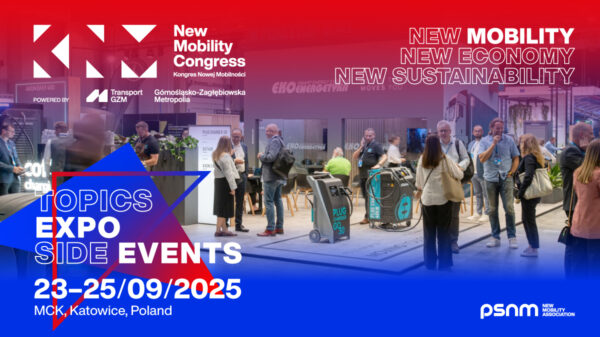New mobility is an international effort that stimulates the efficiency and innovation of economies in the region.
- How can we reduce emissions from transportation and enable safe and sustainable movement of people and goods across Europe through technology, appropriate regulations, partnerships, and new business models?
- What steps can be taken to balance the development of the e-mobility market across the Old Continent?
Selected issues
- CEE’s voice heard in Brussels
- AFIR – time for implementation!
- Smart charging in the entire region
- Regulation, Liability & ESG
- EPBD – right to plug in the CEE
- Baltics to Balkans – an EV route to clean air!
- Fast grid connections
- MaaS & mobility adoption
- The flow of technology, data and innovation
- EV Manufacturing & Skills
DESCRIPTION
The Central and Eastern European (CEE) region is today the industrial and technological hub for zero-emission transport for the entire European Union. The Visegrad countries alone already account for 14% of global lithium-ion battery production, with Poland and Slovakia alone employing a combined total of 700,000 people in the automotive industry. Poland, as the largest market in the region, exports every other electric bus manufactured in the European Union and ranks as the world’s third-largest producer of lithium-ion batteries. It is closely followed by Hungary, which is dynamically developing key industrial investments in the zero-emission technology market. CEE countries are also making significant strides towards electrifying their fleets. From 2021 to 2022 alone, the battery electric vehicle (BEV) fleet grew by 28% in the EU, 50% in CEE, and 58% in Poland. During the same period, Poland saw a 47% increase in the number of public EV charging stations. However, the region faces major challenges due to the slow development of sustainable transport.
A significant challenge is the development of charging infrastructure, including the speed of adding new charging points and the cost of connecting them to the distribution network. Additionally, there are currently no smart charging or smart grid solutions available in the region. Developing zero-emission heavy transport is a major challenge for the region, particularly in Poland where one in five heavy-duty vehicles (HDVs) is registered and where Polish operators carry 30% of all goods transported by heavy road transport. The average age of these vehicles is 12 years, and in some markets, it is even higher. The average age of passenger cars in CEE is also a problem, with an average age of 14 years in Poland, 16 years in the Czech Republic, and even older in Bulgaria. The region has been receiving the oldest and most harmful ICE vehicles from western markets for years.
At a strategic level, the European Union’s Fit for 55 legislative package represents a significant opportunity for the region. The package includes the flagship regulation called AFIR, which calls for a significant expansion of the heavy vehicle charging network in Europe by 2025. The TEN-T core network requires charging stations to be located every 60 km, with a minimum output of 1,400 kW. After five years, this level is to be increased to 3,500 kW. The TEN-T comprehensive network requires charging stations to be located every 100 km, with the same capacities to be achieved by 2030 and 2035, respectively. This is a challenge, given the much slower rate of e-mobility development in Central and Eastern Europe (CEE), compared to Western Europe. Therefore, plans and assumptions regarding the expansion of the charging network in the CEE region should be based on the current state of charging infrastructure.
Other relevant acts include emission standards for passenger cars, standards for heavy transport, the Energy Performance of Buildings Directive for private infrastructure, the Renewable Energy Directive, and the European Battery Regulation, which is particularly crucial for the region. As a response to global actions by major powers such as the American IRA, the European Union is proposing a Green Deal Industrial Plan and a Net-Zero Green Industry Act. However, the CEE region must ensure that any proposed support does not cause the potential for development in the region to drift towards the so-called “Old Union”, thereby aggravating the two-speed phenomenon of e-mobility development.
To address these challenges, PSPA, with support from SEVA, launched the CEE Green Transport Initiative, aimed at promoting dialogue and amplifying the CEE’s voice in discussions about the future of the European Union at significant institutions in Brussels.
Accelerating the development of zero-emission road transport in CEE, the key tasks of the CEE Green Transport Initiative, as well as the promotion of sustainable transport, new infrastructure, sustainable transport measures and public education will be discussed by international experts at the New Mobility Congress 2023.
Contact
PRESS OFFICE
New Mobility Congress 2023
Maciej Gis
Press Officer
maciej.gis@pspa.com.pl
biuro@kongresnowejmobilnoci.pl
+48 606-740-357



